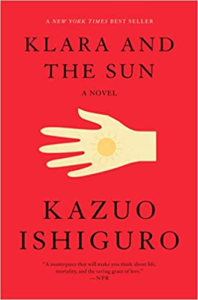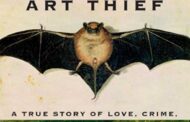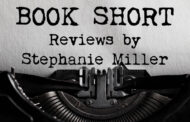Book Short
Klara and the Sun
by Kazuo Ishiguro
Review by Stephanie Miller

In late May, NVIDIA, a maker of chips used in artificial intelligence (AI) technology, was valued at nearly one trillion dollars. Meanwhile, the Silicon Valley executives of ChatGPT and other AI companies caution the world against their own inventions. Those headlines drew me back to revisit the prescience and elegance of “Klara and the Sun,” a novel with an AI robot as protagonist from Nobel Prize-winner Kazuo Ishiguro. Published in 2021, the social and technology issues addressed in the novel are even more relevant today.
Klara’s POV
In “Klara and the Sun,” the title character is an exceptionally observing artificial friend (AF). Klara is designed to be a companion, guardian, and tutor to children in some non-specified future world where many humans are “post-employment.” Read this as kicked out of their jobs by robots.
Since the entire narrative is from Klara’s viewpoint, there is a striking lack of detail about human society’s new rules and practices. We only get glimpses of sometimes violent “communities” created by a lack of technology jobs – presumably, AI robots now make technology smarter – debates on the power of AI to take over, and manipulations and corruption. Apparently, humans haven’t changed much! Also, Ishiguro provides no physical description of Klara herself. That is other than a remark on her “cute” hairstyle and the fact that she can smile.
First, she is store merchandise being browsed by children and their parents. She learns, as programmed, by observing human behavior. She doesn’t feel emotions, but she knows what they are. For instance, she reports “feeling” sad when a child is unhappy. Or she reports “being happy” when shoppers choose another artificial friend. And here, she learns that humans make promises they don’t keep.
Lifting
She is chosen by a young girl, Julie, whose mother tests Klara on how well she’s observed her daughter. Julie is often sick. We later learn this is a result of a decision by her mother to “lift” her intelligence through genetic alteration. This “lifting” is at the heart of the drama. Klara is programmed to want the best for Julie, and so she joins the mother and family friends who yearn for Julie to get better. Each of them has a plan. Klara’s involves the sun (where the robots get nourishment and energy). The mother’s involves Klara in a rather diabolical scheme which taps the power of AI to simulate humanity.
Ishiguro’s Amazing Style in ‘Klara and the Sun’
Through Klara’s sharp and clever observations, which clearly go deeper than the narrative explains, Ishiguro’s spare language slowly meters out the story, a method that both engages the reader and ultimately amazes us with the revelations of the mother’s selfish audacity. The languid way he shares what Klara learns adds to the dystopian flavor of “Klara and the Sun.” I finished it not sure if the mother is a demon or an admirable, fiercely loving parent. Klara, however, is consistently kind and gracious, a true friend to Julie, and more humane than the humans.
Micro-Shorts
The Wonder, by Emma Donoghue
In this short novel, an English nurse is brought to a small Irish village to observe what seems to be a miracle. An 11-year-old girl who claims to survive on “manna from heaven” and seemingly has gone without food for a month. Soon, a journalist arrives to cover the sensation. He and the nurse, Lib Wright, conspire to save the child’s life. It’s a wonderful twist on love, evil, religious fervor, and maternal influence.
The Startup Wife, by Tahmia Anam
Asha Ray is a brilliant coder who abandons her lab to marry her high school crush, Cyrus, and work at his exclusive tech incubator. She helps develop an app that creates a sensation with millions of users logging in every day to connect with Cyrus, who some call the new messiah. Will their marriage survive the pressure? Will reason and morality prevail? Or will she overcome the force of millions of social media users in recognizing good over evil? This is a fun, sparkling, fast beach read. It hits all the basics: smart women who fall for charismatic men, cool technology, the power of the masses, and the irrationality of the Street.
Master Slave Husband Wife: An Epic Journey from Slavery to Freedom, by Ilyon Woo
This is the amazing real-life story of Ellen and William Craft, who in 1848 escaped slavery through a daring disguise. Ellen becomes a sickly white gentleman, and her husband William acts as her slave. Together but segregated, they ride wagons and trains from the Deep South to Philadelphia and eventually Boston. The escape is covered in the first few chapters, and then the real story begins. They become very active and vocal abolitionists, risking their lives time and again, to rally Americans to remove slavery from our country. They worked with more famous abolitionists like Frederick Douglass and Harriet Tubman, but their story was not always told because they lived a very non-traditional life. Woo celebrates (at times, I felt rather breathlessly!) their choices and achievements, especially those of Ellen who could have passed as white but chose always to live as a Black woman.





